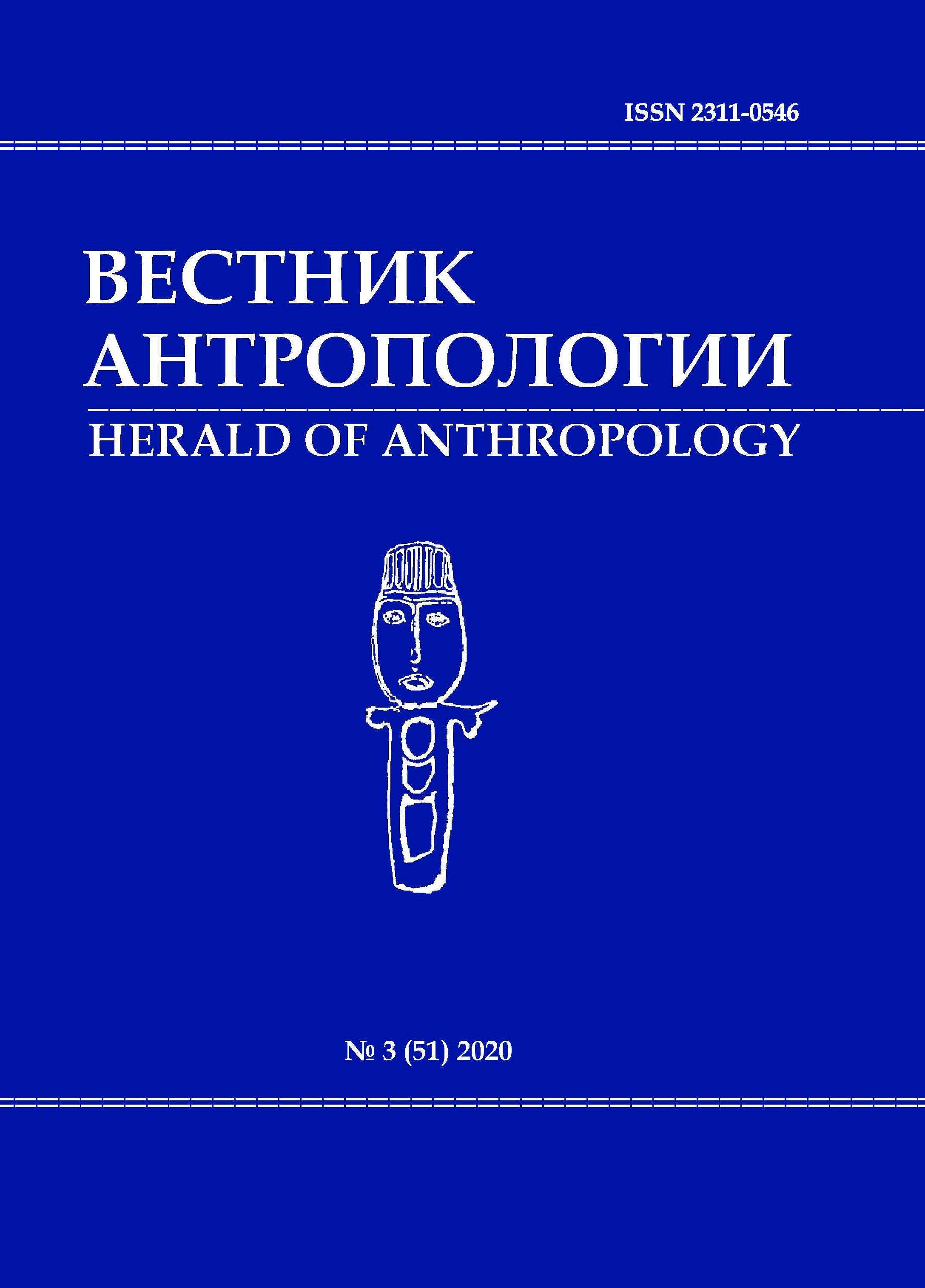Краниологический аспект генезиса населения тропической транссахарской Африки
DOI: 10.33876/2311-0546/2020-51-3/261-279
Ключевые слова:
краниология, краниотип, тропиды, пигмеи, транссахарская АфрикаАннотация
Настоящая работа продолжает краниологическое исследование по типологии ростовых процессов мозгового черепа. Изучалось современное население тропической транссахарской Африки. Анализировались краниосерии территории Габона и бассейна реки Конго – западная часть изучаемого региона, а также серии восточноафриканских земледельцев и капоидов (бушменов и готтентотов) – восточная часть изучаемого региона. Отдельно рассматривались мужские и женские краниосерии. Некоторые краниосерии удалось разбить на фракции, различающиеся по типу ростовых процессов черепа. Сравнительный анализ показал, что краниосерии (и их фракции) западной части изучаемого региона, как целое, серьёзно отличаются от таковых восточной части по форме черепной коробки. Это отчётливо видно на мужских сериях, но менее очевидно при сравнении женских серий. По общему размеру черепной коробки в западной части изучаемого региона наблюдается значительно большая дисперсия, чем на его востоке. Это является следствием того, что в экваториальных дождевых лесах в негрских популяциях налицо примесь пигмеев, для которых характерна малая величина черепной коробки. Такого отличия между земледельцами Восточной Африки и краниологически похожими на них капоидами (бушмены и готтентоты) не наблюдается. Отсюда следует два основных вывода. Во-первых, население западной (гумидной) части экваториальной Африки сложилось в результате смешения более крупноголовых носителей негрских земледельческих культур с пигмеями, имевших заметно меньшую величину черепной коробки. Среди собственно негрских краниосерий здесь выделяются ростовые фракции не отличающиеся от пигмеев. Во-вторых, земледельческое население восточной (более аридной) части изучаемой территории в краниологическом отношении практически не отличается от капоидов (бушмены и готтентоты) Южной Африки, при этом резко отличается от скотоводческих популяций этой территории.






















